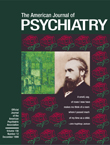Margaret Diehl, a New York novelist, describes this book, her third, as a memoir. It is dedicated to the memory of her older brother, Jimmy, the boy of the title, who was killed in a bicycle accident in 1965 when he was 14 and she was 9. He had failed to come home before dark on a snowy February evening, and their father, angry at his lateness, refused to pick him up in the family car. Diehl was traumatized once again 4 months after Jimmy’s death when her father committed suicide, running the family car in their closed garage.
Jimmy’s death had ushered me into an adult world, too big, too dark, full of numinous power—I was staggered, but I was there. Daddy’s death did not take me anywhere. Or rather it took me to hell, but I couldn’t know that. (p. 185)
This would make one expect a story of loss, grief, and trauma, and they represent one theme of the book, the one most emphasized by the title and the jacket and, perhaps, most intended by the author. However, a second theme emerges early and ultimately dominates—the severity of family psychopathology and its reverberations across generations. Both of these are told as experienced by the author as a sensitive child. She is eloquent in capturing the experience of growing up with a frightening, emotionally disturbed, and chronically suicidal father, a concerned but emotionally unavailable and progressively alcoholic mother, an older brother idealized after his death, a younger brother who reacts to that death with severe conduct disturbance and provocative hostility (sitting on the window ledge of their Manhattan apartment and threatening their mother with yet another death). Her older sister, the object of her envy and competition, is portrayed with less detail; she is the one who informs the 9-year-old of both deaths.
Margaret herself is a troubled child. Introspective, lost in fantasy, intrigued by magic, and mostly friendless, she retreats to books, sweets (her description of craving pastries to soothe herself, becoming fat, and using her fatness to withdraw further is compelling), pets (she is forced to give up her home and her cats when they move to the city), and an inner world. There are moments of hope—a brief friendship with her first chum, which comes to an end when the family moves to the city, a hopeful first day at a new school, episodes of closeness with her sister—but for the most part depression and despair either envelop her or are only moments away.
The result is not a work of fiction, nor a case history, nor even an autobiography in the usual sense but, rather, a re-creation of the inner life of a sensitive, troubled, and traumatized young girl, with special attention to how her talent for language and fantasy helped her (and if this book is evidence, probably still help her) to cope and to survive. I found myself wondering whether she was yet another example of the now familiar link between mood disorders and literary creativity. I also sensed the results of defensive reworking of her story—the stabilizing myth of the idealized older brother, her continued rage at her father, disappointment in her mother’s failure to support her, little awareness of her failure to support her mother, rivalry with her older sister, despair at being a girl, and identification with her more rebellious younger brother. Yet these were all secondary responses—my first was to be caught up in her story and affected by her ability, and willingness, to share it with us.
It is not surprising, in the final chapter, to learn of her subsequent depression and alcoholism, or of her arranging her life to avoid having her own children. Her sister has children, her mother remarries and divorces, but we learn nothing of the younger brother, who seemed most severely affected by the trauma. However, we are left not with a clinical account, nor even with a family story, but with having met a young girl whom we have come to know with unusual intimacy.

